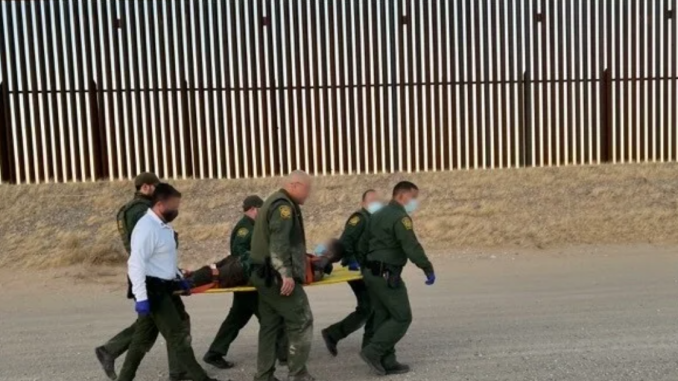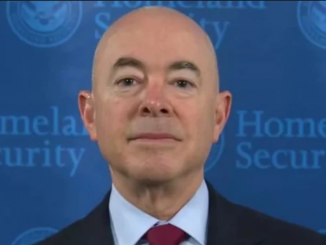
EL PASO, Texas (KTSM) — Border barriers have been around in one form or another for decades, but only recently has the number of injuries related to the border wall skyrocketed — coinciding with efforts to beef up the barrier.
With more than 2 million undocumented immigrants crossing into the U.S. illegally just last year, according to U.S. Customs and Border Protection, it’s not only law enforcement but local doctors and first responders who are also dealing with the surge in migration.
“Last year we saw 323 patients that had border-related injuries, of those, 82% were due to the border wall itself,” said Dr. Alan Tyroch, founding chair/professor of surgery at Texas Tech University Health Sciences Center.
Over the years, the height of the border barrier has been raised significantly, with the latest installments of up to 30 feet in some sections. While law enforcement officials said it’s a constant battle to secure our border, some of the casualties and the cost of caring for the migrants are taking a toll on border communities.
An elevated wall means elevated danger and an elevated number of migrant injuries and rescues — border barrier rescues to be specific.
Chief Daniel Medrano with the Sunland Park Fire Department told KTSM that in 2021 they saw the largest number of rescues. “Right under 230 for the year. It was about 9 percent of our call volume,” he said.
U.S. Border Patrol Agent Carlos Rivera said that the El Paso Sector is the third busiest for migrant apprehensions, presenting more dangers when you have more people attempting to jump the border wall. “We’ve seen all sorts of demographics trying to come up and over that fence, be it children or families or single adults which is the prevalent problem that we have here,” he said.
During this special report, Border Patrol and KTSM 9 News Anchor Brenda Medina came across one of the tools used by smugglers when attempting to get the migrants over the border barriers.
“The transnational criminal organizations (order) migrants to scale this border barrier with makeshift ladders, we’re not talking about a regular ladder from Home Depot or any other big box brand,” described Rivera. “We’re talking about makeshift ladders that easily break with the weight of migrants as they try to scale over the border barrier.”
Rivera adds that criminal organizations will yank the ladder to avoid arrest, often creating a diversion to turn agents’ attention to rescuing the migrants while they attempt other illegal activity. “They do not care about the lives of these migrants, all they care about is the money,” he said.
Video captured by Border Patrol showed a pregnant woman sitting at the top of the barrier on a small ledge only about 6 inches wide, just off a busy El Paso highway. “Leaving the migrants up there. … Leaving the migrants to fall so they do not face consequences,” Rivera said.
Following the rescues, the immigrants are transported to hospitals across the city, including University Medical Center and Del Sol Medical Center.
Dr. Stephen Flaherty, trauma medical director at Del Sol, said that what seems to be most common to him “is people who have complex fractures of their ankles, the lower leg and where it joins into the foot, that leg/foot/ankle complex and these are actually very devastating fractures. They break the bone, and it comes out through the skin so it’s an open fracture and that can get dirty because they are landing in the dirt. These fractures are associated with a lot of swelling,” Flaherty said. “We often have to wait a period of time before the orthopedic surgeons can fix the bones … so, the patients have prolonged hospital stays waiting to get their fractures fixed.”
“It’s almost every day we get somebody injured from falling off the border wall,” said Dr. Susan McLean, professor of surgery, TTUHSC.
Most of the migrants are treated at UMC. In fact, McLean and Tyroch said they saw 265 patients in 2021 — an increase from 125 in 2020 — with border wall-related injuries, including some considered severe and even deadly. “Like traumatic injuries to the brain itself which they could present with a coma, and these are long-lasting type of injuries,” Tyroch added. “We see pelvic fractures, rib fractures, upper extremity injuries but predominantly what we see are the lower extremity injuries.
To put things into perspective, doctors compare these injuries to falling from two or three-story buildings, “One in ten people we get from border wall falls has a spine injury,” McLean added.
“We have seen several who have fallen from the wall and made their way into the city, and they can’t take the pain anymore and they have to ask for assistance,” Medrano said. “Some of them are amazing to us as to how they made it as far as they did with the injuries that they had.”
With each one of the migrants treated at local hospitals, the question many might be asking is who is footing the bill for these patients? County Commissioner David Stout said while some of the funding does come from local tax — it is a lot more complicated than that.
Here’s a breakdown: Estimated costs are $4.8 million, while the charges are $12. 4 million. Stout told KTSM the federal government has so far reimbursed UMC with close to $2.8 million, or about 20%.
These totals are from October 1, 2018, to February 15, 2022.
The commissioner also says, “there are different federal and state funding streams that help pay for (migrant bills) and only a small percentage of UMC’s total budget actually comes from local property tax. This is problematic because immigration is a federal issue, and the federal government should fully reimburse for any patients they take to UMC,” Stout said.
*story by BorderReport.com


